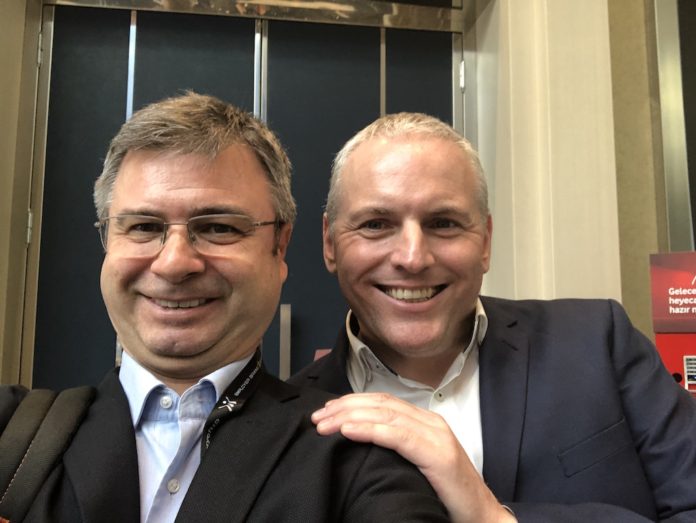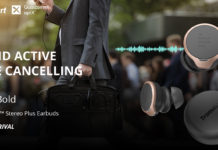I had a nice talk with Shane Gray who works at Clinch for business development while he was in Istanbul for Employer Brand Summit. We talked about recruitment marketing and KPIs.
– We are here with Shane Gray. Welcome, Shane.
– Thank you very much. Great to be here.
– Nice to hear from you today. Could you tell us about yourself just a little bit and talk about what was your presentation?
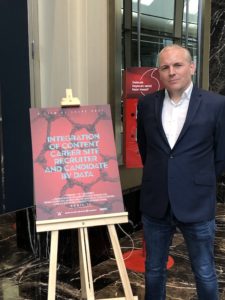 – Of course, happy to do. My name is Shane Gray. I’m in the business development for a company called Clinch. We make a recruitment marketing platform. So basically, what that means is we are the layer that sits on top of an applicant tracking system, and interfaces with the candidate hopefully elevate that experience and ultimately nurtures them to employer branding content and give them a better experience to get more of them over the line as successful candidates. We work to put on North America but also across Europe. Our clients range from people like Nike to Eventbrite in North America. So, we’ve got a wide range of companies from very large ones to more mid-sized tech companies.
– Of course, happy to do. My name is Shane Gray. I’m in the business development for a company called Clinch. We make a recruitment marketing platform. So basically, what that means is we are the layer that sits on top of an applicant tracking system, and interfaces with the candidate hopefully elevate that experience and ultimately nurtures them to employer branding content and give them a better experience to get more of them over the line as successful candidates. We work to put on North America but also across Europe. Our clients range from people like Nike to Eventbrite in North America. So, we’ve got a wide range of companies from very large ones to more mid-sized tech companies.
– You are working with international companies.
– We work with international companies. We have clients ranging from the Middle East to across Europe and then also North America.
– So, you need to know about different cultures, habits.
– A little bit. I think the one interesting thing about how candidates are looking for jobs, it does vary region by region, but there’s a broad theme. That theme is really around most candidates want to try and find out more about the employer beyond just the job description to the beginning. They want to know about the culture of the organization and values, the people they’re going to be working with. Those are the things that are converting them into active, suitable, quality applicants.
Let’s talk about the job description. They’ve seen a good quality candidate for a sales role for a software company in Istanbul probably knows what he’s going to have to do for that role. So, he or she is now trying to think what would make me move from this employer to the one that is advertising the job at me. It’s all. That’s the important stuff.
– It’s a kind of marketing for the companies to applicants.
– A hundred percent correct. Yes, it is. We call it recruitment marketing. It really is thinking. There’s a great expression called in sales that says the best copy leaves no question unanswered in the buyers’ mind. And, that exact same analogy applies to recruitment. The best job description in candidate experience leaves no question unanswered in the candidates’ mind. Unfortunately, a lot of the time the job description on a job board or on a company’s career sites leaves lots of questions unanswered.
– You presented a slide about a funnel. There were a thousand visitors in that funnel. Could you summarize that?
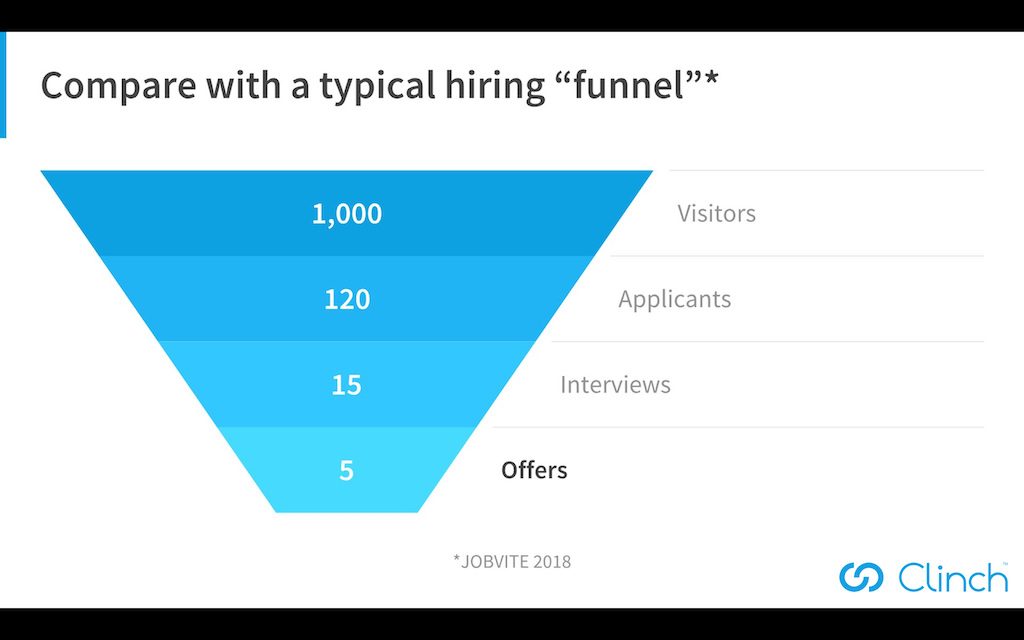 – If you look at the funnel what we typically see in a classic funnel for an organization. How many people visit them and consider working for them? How many people apply? How many people are successful? And then how many people get hard? So that data came from companies who make an ATS ‘Applicant Tracking System.’ It shows about a thousand people will look at a job. A hundred and twenty will apply, and at the very end about five get an offer. One of the things that Clinch does an outstanding job is getting any more of those people to apply for the job. So those were average industry statistics. Our clients would typically get three times the volume of applicants. Then that leads to an increase in hiring quality because now you have more qualified, good quality candidates to pick from. So, you do not always have to choose the one from only one that matches the criteria.
– If you look at the funnel what we typically see in a classic funnel for an organization. How many people visit them and consider working for them? How many people apply? How many people are successful? And then how many people get hard? So that data came from companies who make an ATS ‘Applicant Tracking System.’ It shows about a thousand people will look at a job. A hundred and twenty will apply, and at the very end about five get an offer. One of the things that Clinch does an outstanding job is getting any more of those people to apply for the job. So those were average industry statistics. Our clients would typically get three times the volume of applicants. Then that leads to an increase in hiring quality because now you have more qualified, good quality candidates to pick from. So, you do not always have to choose the one from only one that matches the criteria.
– The number of applicants is higher means, good recruiter.
– I am careful about this. Because good recruitment marketing will always get you more applicants. But the real key is you also want to understand more about those applicants. You need to have the concept of some form of lead scoring. You need more applicants because it seems better like you’re dealing with more quality candidates. But the disadvantage is you need to start to think about how do you understand from those candidates? And that’s what I was alluding to in the slides the people who watch a video or engage with a blog post. Applicants who watch a video first are up to eight times more likely to get hired. They’re getting hired. Yeah, they’re getting hard. They’re the ones that are getting hard. The people who ignore all the content and go straight to the apply button and make an often poor quality application are the ones that are not getting hard. So, employer branding is an excellent opportunity to use its content and the measurement of how people engage with that content to lead score the people before they even make it into the ATS. It’s very similar to what people do in marketing.
– Also, you mentioned that if a person read the blog.
– Yes, that’s correct if a person read the blog, that person is four times more likely to get hired. We would track data. We would see candidates that would arrive on the job. We would inject some blog content into that job description or around it. And then we track the people who read the blog post and then apply afterward versus the ones you just apply and then read the blog post. When we look at the hiring data, which we synchronize back from a multitude of ats’ we integrate with workday. We connect all the significant ats’ as we’re able to see that the people who are engaging in that type of behavior consuming the employer branding content or even the corporate content. They’re the ones that are getting hired at a much higher rate. And of course, it makes sense. Because they’re the ones that when they have a conversation with a recruiter. They understand more about the role. They understand the organization more about its mission and values. Therefore, they get further than the process.
– Are there any key performance indicators ‘KPIs’ for these procedures?
– If you look at the data that we put up in the sliding the report gives great averages. I think if you can beat that, then you certainly know ahead of the competition. We are providing this report every year to four thousand clients globally. It’s a great way to benchmark yourself. But ideally, we would like to see most of our clients which they do they far exceed those metrics in terms of conversion and in terms of quality ratio. So, absolutely. That report is a great place to start.
– You also mentioned the engagement loop.
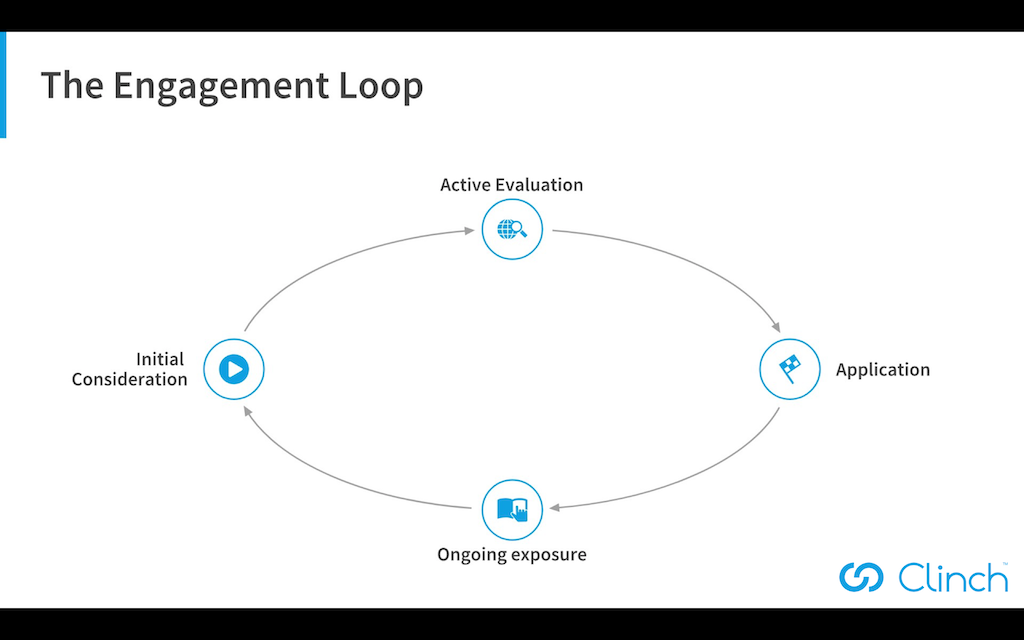 – The engagement loop. It’s a little bit borrowed from the world of sales and marketing. Everybody thought more toward a lot about a funnel has been a very linear process. That process is not quite so linear anymore. Because of online and digital, they were engaging with different parts of a brand on a potentially an ongoing basis. I suppose a good example is how do I find a job, how to look at the position. I’m thinking about. Maybe I made a friend in the coffee shop, and he works for that company. I take some data from that person. Are his friends happy or not, or does he like it that’s for referrals do so? Well, then I may see a newspaper article to say the company’s stock price is going up well. All these things I’m collecting. If the brand is doing a good job of making it easy for me to say engage with them at some point, there’s a tipping point where I go. You know what this could be a great place to work. I’m going to go and apply for a job there.
– The engagement loop. It’s a little bit borrowed from the world of sales and marketing. Everybody thought more toward a lot about a funnel has been a very linear process. That process is not quite so linear anymore. Because of online and digital, they were engaging with different parts of a brand on a potentially an ongoing basis. I suppose a good example is how do I find a job, how to look at the position. I’m thinking about. Maybe I made a friend in the coffee shop, and he works for that company. I take some data from that person. Are his friends happy or not, or does he like it that’s for referrals do so? Well, then I may see a newspaper article to say the company’s stock price is going up well. All these things I’m collecting. If the brand is doing a good job of making it easy for me to say engage with them at some point, there’s a tipping point where I go. You know what this could be a great place to work. I’m going to go and apply for a job there.
– You said ‘Great Place To Work!
– Yes, I said, ‘Great Place To Work.’ That’s what people want. People want great places to work.
– You may know that there is a company called ‘Great Place To Work.’
– Absolutely. They have a trademark in the result. They’ve chosen it very cleverly because that’s what people want a great place to work. Work is so much of people’s lives these days. They want to spend that time there. I thought the Vodafone presentation was outstanding. Because they’re doing the things to make work life better. That’s some of the best ways of selling a job ever. So, I know from our work in tech hiring and things like that most software engineers. They wanted the thing that tells them more about the company is a picture of the desk. They know a description of the task is a desk going to be noisy. Do I have my own desk? What sort of equipment am I going to be using? All those things that go way beyond the job description that says they need to have ten years Java or PHP experience. Because those guys who have that experience they can choose for they go to work. You have to track them, and you’ve to tell the story that’s going to resonate with them. Sometimes a picture of the desk is what it takes.
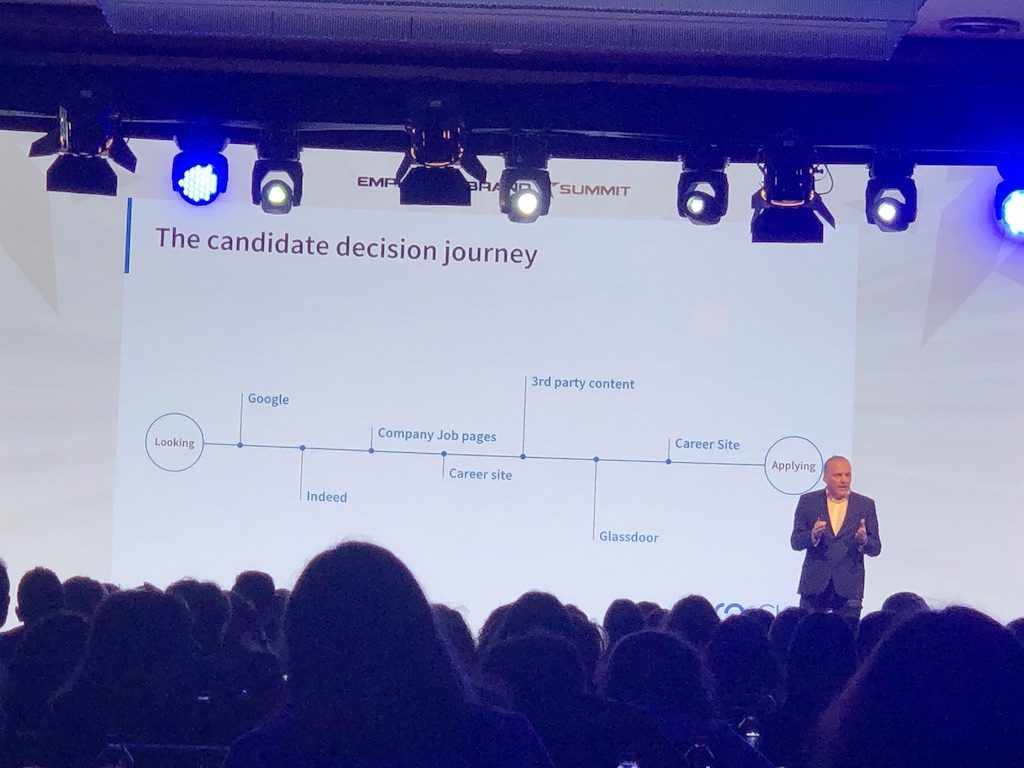 – Besides those contents also, is the design of the website essential?
– Besides those contents also, is the design of the website essential?
– Yes. The guys in PH Creative do a fantastic job of getting that content. We personally are not website designers although we do have a website framework and we do host career sites. We’re often more interested in the function underneath the site than the actual form. It’s gotta look nice, absolutely. But it’s probably more important as to what’s going on underneath the covers. So, what’s happening after people applying don’t finish an application. Are they getting information from the right area? Are they in the right location to have actually got hired for that job? Are you asking people using automation? How did you do today? What things did they find easy to use in the site? But things that they see not too easy today even find what they were looking for. So, I think the website is great, but the whole work and candidate experience goes way beyond just the visual elements of it. It’s about the form and function. Hopefully automated workflows are running underneath to get more people over the line. Because the site is converting me today. But then think about I don’t convert today because of that engagement loop. What’s going to get me back via text, SMS, email? What’s going to keep me expose those brands when I do go to work have a bad day and realize I don’t really want to work for my boss any more. What’s going to make that brand pop into my mind is a great place to work.
– It’s a continuous process. What do you think about video conversation, etc.?
– We partner with some companies who do it. So, there’s obviously some ruined things they’re very important. I think one thing we’d like to see more of is put more video interview. But let’s not call an interview. It’s a kind of conversation. It’s a stage before the application process. Asking ‘Tell me about yourself. What are you looking to achieve? What do you want to do?’ That is the sort of stuff that helps votes. Let’s get to know each other a little bit better. So, I think the more of that can be placed before application. It can have huge effects.
One of the things we do generally are passionate about is trying to help people who are not going to get the job, not apply. That’s in everybody’s interest. Because you can talk about the time waste which I alluded to. But think about the emotional distress and all the bad things that happen when people don’t get a job that they’ve applied for. They get disappointed are sad and all that sort of thing. That’s an awful human cost. That could be minimized if organizations were better at helping people who are not going to get the job, not make that application.
– Thank you very much.
– Thank you very much for the conversation.
Sinan Oymaci


